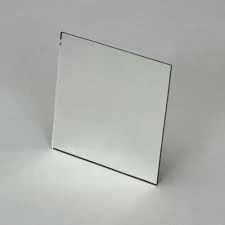

The Art and Utility of Frosted Glue Chip Glass
Frosted glue chip glass is an exquisite material that marries functionality with aesthetic appeal, often used in a variety of architectural and design contexts. Its unique texture, characterized by an icy, translucent appearance, has made it a popular choice among architects, designers, and homeowners looking to add a touch of elegance and sophistication to their spaces.
What is Frosted Glue Chip Glass?
Frosted glue chip glass is created through a process that involves applying a glue-like substance to the surface of glass and then etching it to produce a frosted texture. This technique gives the glass a distinctive, blurred appearance that diffuses light and provides a level of privacy while still allowing some light to filter through. The “chip” effect is reminiscent of ice crystals, making it a striking choice for various applications. The result is a glass panel that is not only beautiful but also functional, as it can obscure visibility without sacrificing brightness.
Applications in Architecture and Interior Design
Frosted glue chip glass is versatile, finding a place in a multitude of settings. One of its most common uses is in bathroom partitions and shower enclosures. Here, it provides privacy while still permitting natural light, transforming what can often be a stark and uninspiring space into a serene retreat. The glass's textured surface also helps mask water spots and soap scum, making maintenance an easier task for homeowners.
In addition to bathrooms, this glass is often used in sliding doors and room dividers. It offers a modern aesthetic that can complement both contemporary and traditional design schemes. The frosted texture adds a layer of sophistication, creating a sense of separation without completely closing off spaces. This feature is particularly appealing in open-concept homes, where maintaining a sense of flow while defining individual areas is essential.

Another popular application is in cabinetry and shelving. Frosted glue chip glass doors can soften the look of any room while allowing for the display of decorative objects without the clutter of visibility. Additionally, it can be used in office environments, where it is often employed in conference rooms and private offices. Here, frosted glass allows for transparency and openness but with the necessary confidentiality during meetings and discussions.
Benefits of Using Frosted Glue Chip Glass
One of the primary advantages of frosted glue chip glass is its ability to balance light and privacy. In spaces where light is essential yet privacy is needed, this type of glass delivers an effective solution. It plays a vital role in creating well-lit interiors without compromising personal space, making it suitable for both residential and commercial applications.
Moreover, the aesthetic appeal of frosted glue chip glass contributes to its desirability. The beautiful, textured surface can help elevate the overall design of a space, adding a modern, chic touch. It can be easily integrated into various styles, from minimalist and industrial to more traditional and ornate.
Frosted glue chip glass is also relatively easy to maintain; unlike clear glass, it does not show fingerprints or water spots as readily, making it a practical choice for high-traffic areas. Regular cleaning with mild soap and water is usually sufficient to keep it looking pristine.
Conclusion
In summary, frosted glue chip glass is a beautiful and functional material that enhances spaces while providing essential practical benefits. Its unique aesthetic appeal, combined with its versatility across numerous applications in architecture and interior design, makes it a favored choice among professionals and homeowners alike. Whether used in bathrooms, sliding doors, or decorative cabinetry, frosted glue chip glass embodies a perfect blend of artistry and utility, proving that functionality does not have to come at the expense of beauty. As design trends continue to evolve, this material is likely to remain a staple in modern interiors, reflecting a timeless elegance that speaks to the needs and desires of contemporary living.